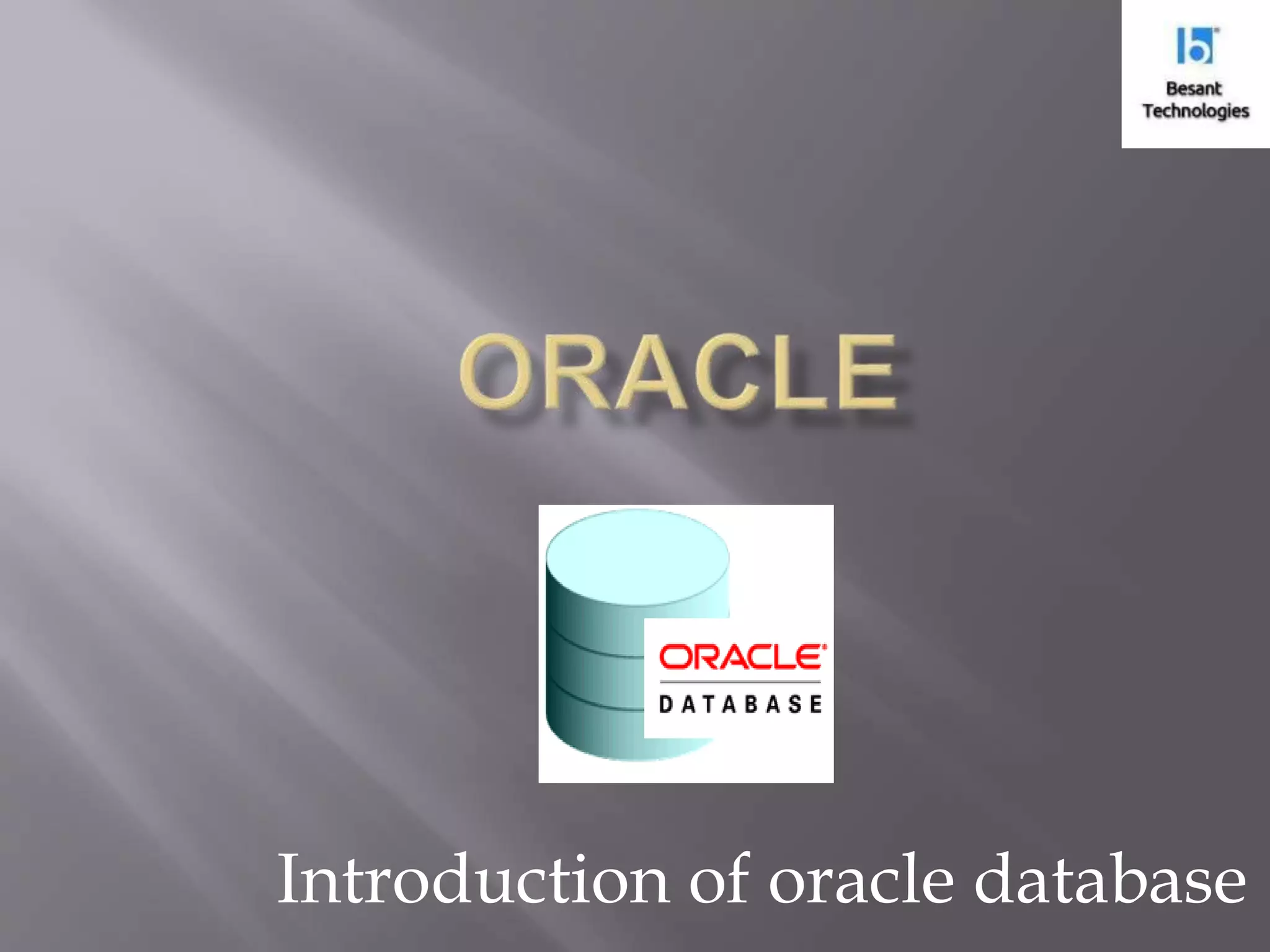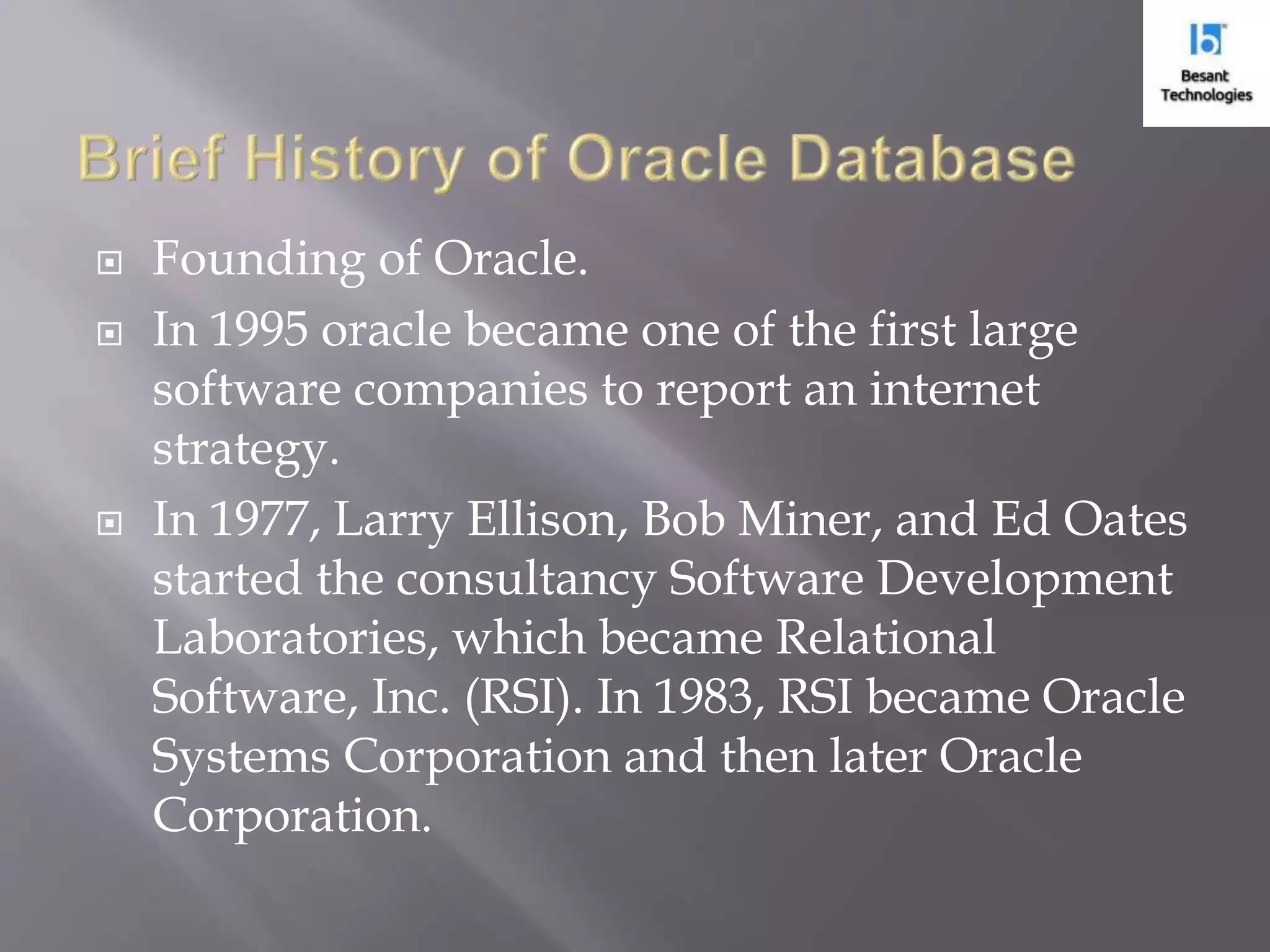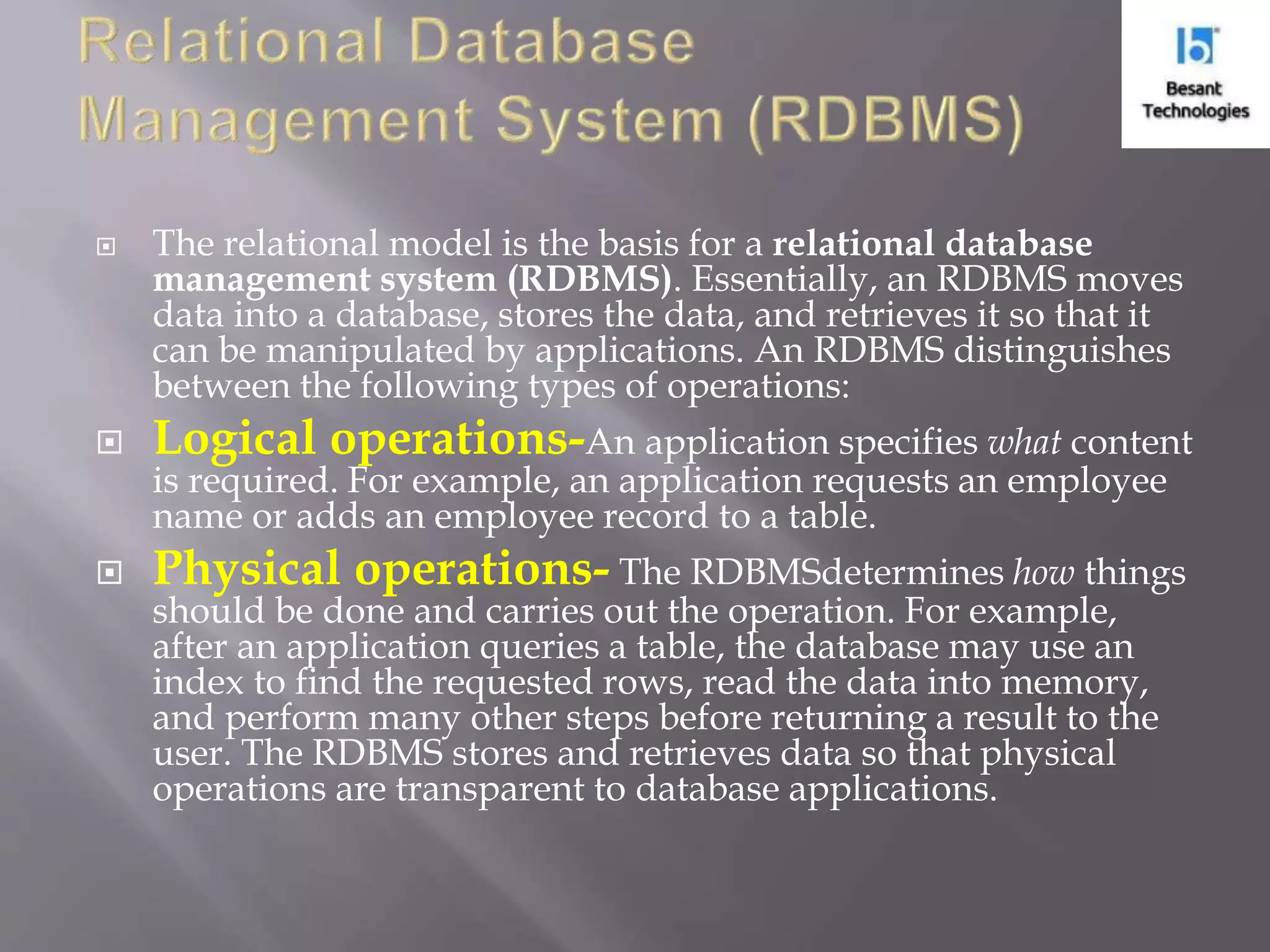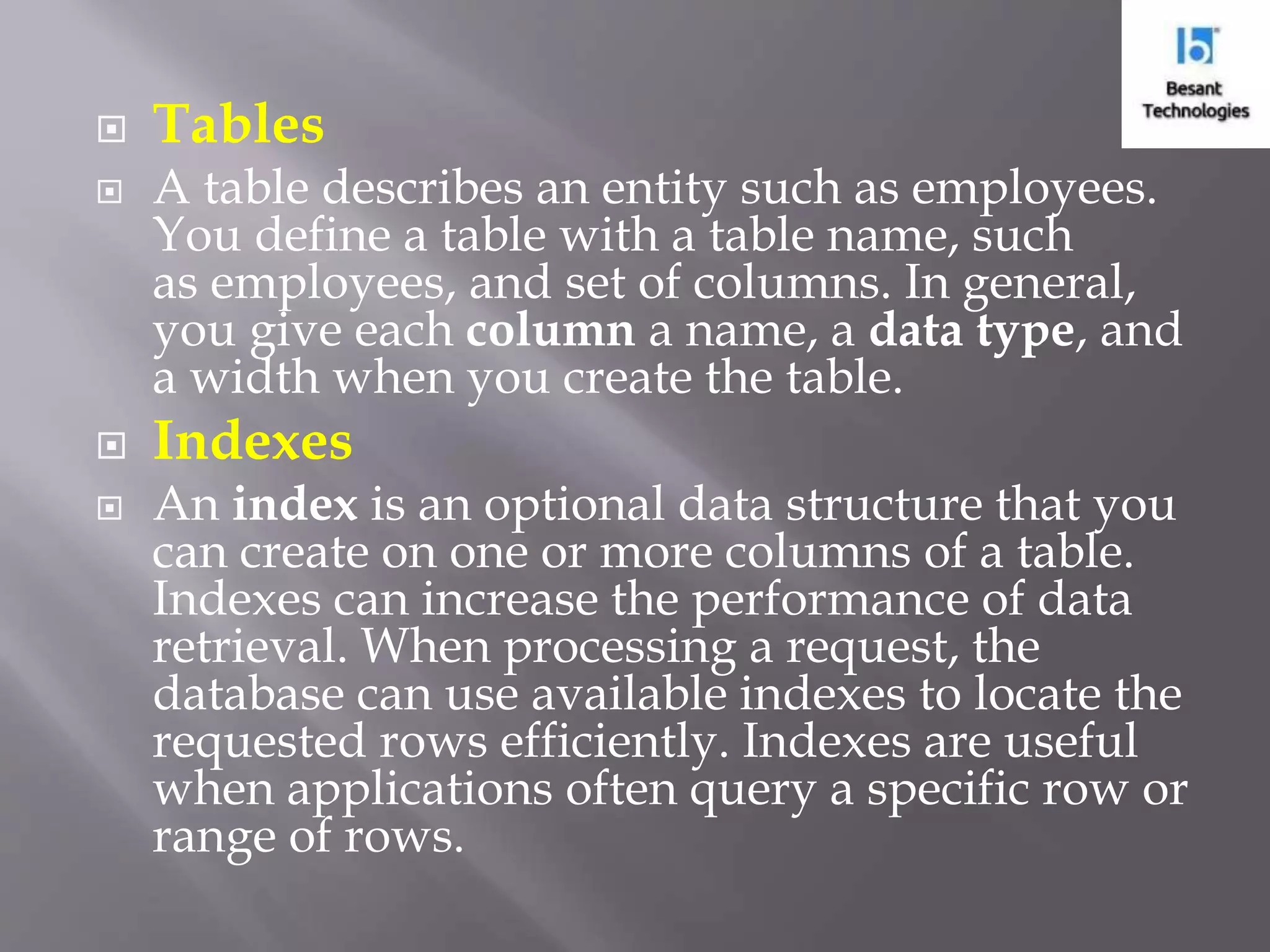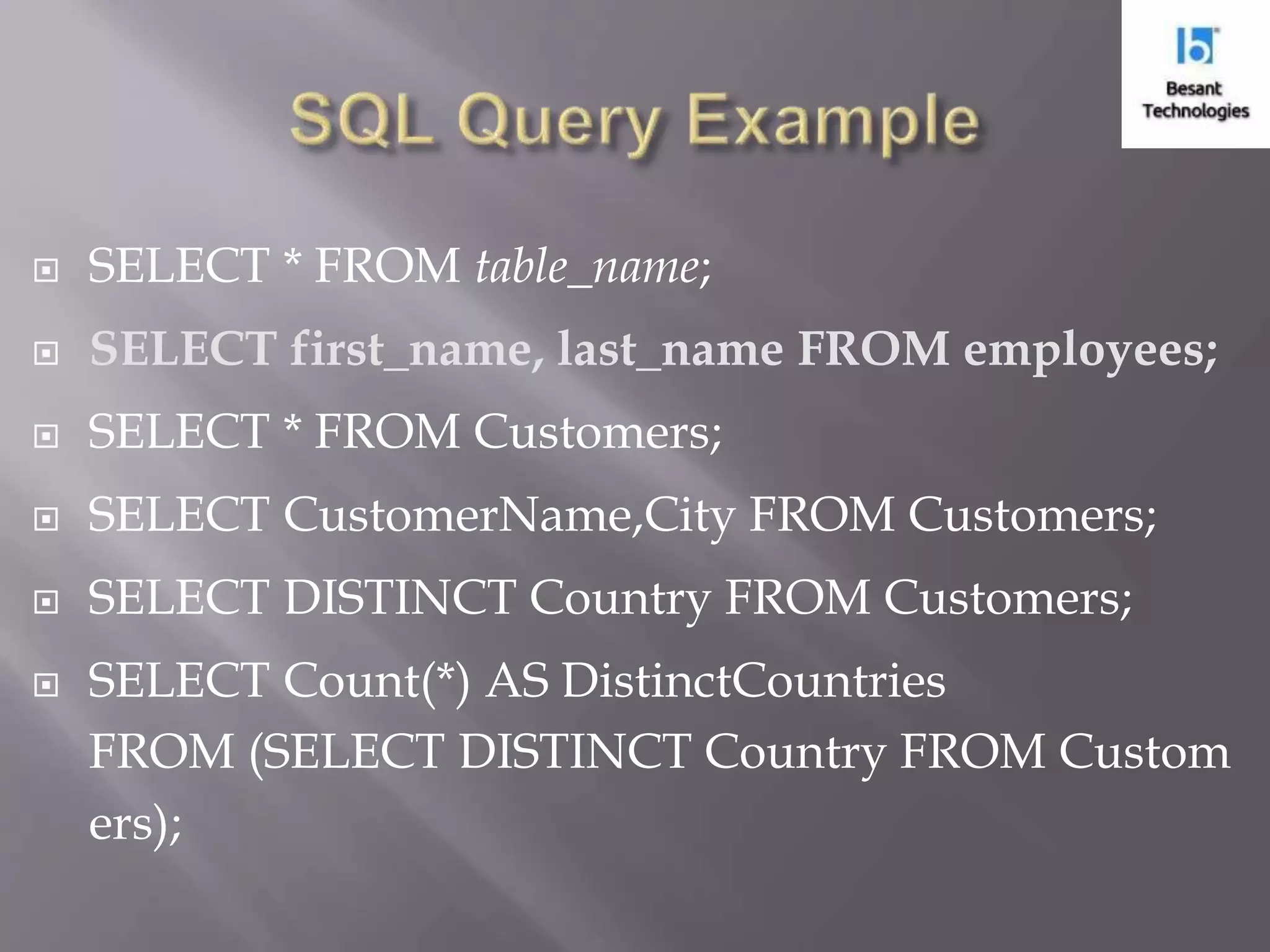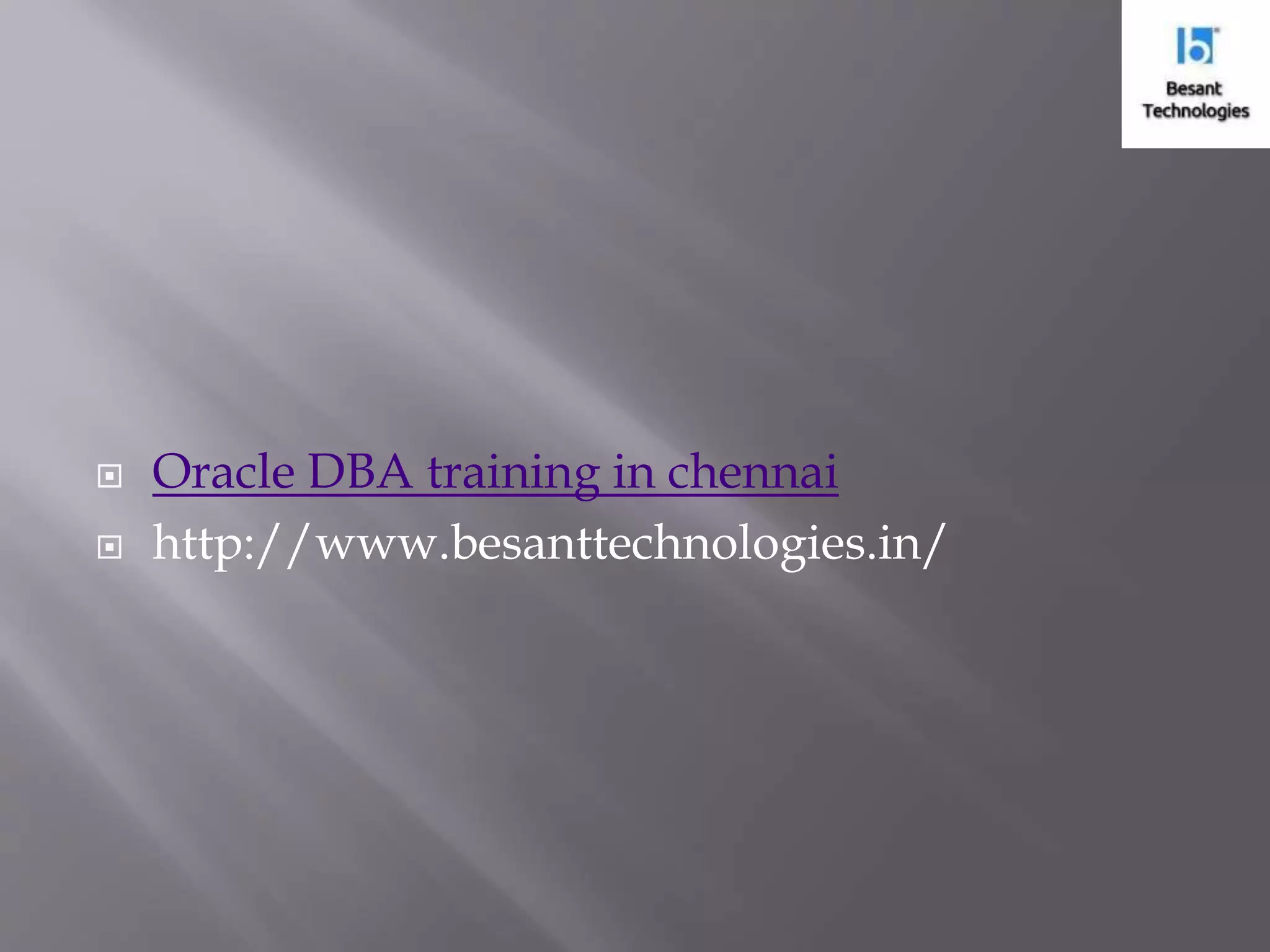Oracle was founded in 1977 as Software Development Laboratories by Larry Ellison, Bob Miner, and Ed Oates. It released its flagship product, the Oracle Database, which is a relational database management system. The Oracle Database stores data in tables, which can be indexed for faster data retrieval. It uses SQL for querying, manipulating, and defining the database structure. Oracle Database has become one of the most popular database technologies in the world.
